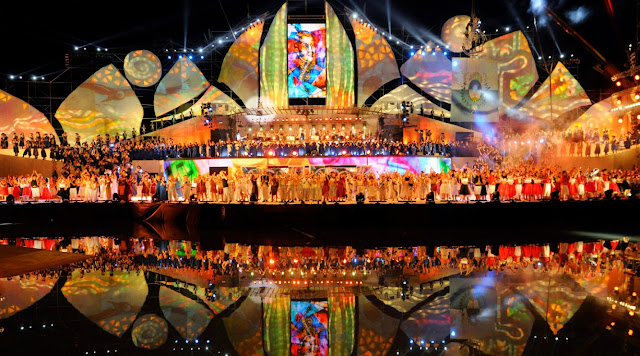La Damajuana (Demi-john)
I
remember in my childhood, that my grandmother used my cousin and me (two only
boys in the house) to clean Damajuanas (the demijohns) with her. At home, there were several
for different uses, but there were ones designed exclusively for fetching wine
from the winery near home.
It
is that at that time the "loose" wine was sold in bulk as they say,
directly from the jars or barrels to the demijohns, and I kept watching how
they were filled and above all I loved to see that purple foam that was formed
as it filled up. The scene multiplied with all those who went to buy wine like
this at the winery, since a demijohn was enough to have wine on the table every
day for at least a week. Wine at lunch and dinner was as important as having
bread on the table to eat.
My grandmother used to tell us when she drank her first glass of red wine, that it was good for whetting and digesting. Later science discovered that it has other real benefits in the body, but at that time, the people of then had their beliefs about the good properties of wine in food. In addition to the ceremonial presence at the table.
This wine that we brought in demijohn was passed into glass bottles, previously washed, and then placed in the refrigerator to refrigerate it so that it would be fresh at mealtime. In some places they used glass, plastic or ceramic jugs. Over time an element emerged that became an emblematic part of Argentine home tables - El Pingüino
That it was a ceramic jug in the shape of a penguin that I do not know why it ended up being chosen by all the households in Mendoza, becoming an element as characteristic of the time as the demijohn itself. Even today there are collectors behind different models of these jugs all over the world.
Of course, not every house had a cellar nearby. The wine had to be bought for the whole week in demijohns packaged by the same wineries, which they distributed in warehouses, kioskos (small shops selling a bit of everything), and there were even street vendors selling this product.
What is the Damajuana?
It is a glass utensil shaped like a spherical container that is used to store liquids. They could have different capacities that could vary between 5, 10 and 40 liters, or even more. Formerly its main use was destined to move and store wine, liquors, oil or water. They were always lined with wicker or esparto and with handles to be able to move them easily. One particularity was wetting the outer vegetable layer to better maintain the temperature of the liquid contained within.
In England it is called "demijohn", in France "bonbonne" or "dame-Jeanne", although it is also known as "damajuana"; in Italy it is called "damigiana" and "bottiglione"; in Germany, "korbflasche", "demijohn" and "glasballon"; in Portugal and Brazil it is the “garrafão” and in Spain it is better known as “garrafa”, in Chile they call it “chuica”.
A detail: In the past, some small wineries, when they did not have more space inside, stored the wines in "demijohns" and placed them outside the cellar. These wines underwent oxidation due to the constant changes in temperature between day and night, giving rise to what we call "rancid wines".
These wines continue to be produced, mainly in Spain.
Where was this packaging that became so popular at the time when wine was sold "loose" or in bulk for households?
There are several stories spread, some spread in America and others in Europe
The American says that in the time when wine was transported in barrels and then sold loose to the consumer. It was common to see buyers with bottles of different sizes and shapes, even to see other not so traditional containers with which people went to buy their wine. The wife of a merchant and glazier named Doña Juana appeared one day to buy his wine with this container, and people began to call the container or the bottle of Lady Juana. This is how it became popular until it became the name of the Damajuana.
Another that is told as an anecdote is that in the 16th century, Queen Juana I of Naples was on a trip and when passing through the village of Grasse she had to take refuge in the workshop of a glazier. The craftsman was proud to see the Queens interest in his bottle-making process. So much so that the master decided to inflate one of enormous proportions, perhaps to show off to the sovereign. The result was this bottle and that in honor of the Queen she decided to baptize it as "Queen Juana", and that the queen said it was more appropriate to call her "Lady Juana" and not give the container the title of queen. (something like that the only queen is me 😂)
On the other hand, there is another story or legend that associates it with the 16th century where the sailors from the south of France called, in a funny or mocking way, Dame-Jeanne to thick bottles of 10 to 20 liters, comparing them with women with a lot of weight and with many curves. In addition, as they had two handles on their sides, it gave the appearance of a lady with her hands on her hips.
Whatever the real story or all of them, the truth is that it was a traditional element in agriculture and life of the last century. So much so, that we have several copies throughout history and it is still being used in various parts of the world.
Today it can be found as a decorative element, alone or accompanied by more specimens, in more modern spaces or in more rustic places such as a living room, a patio or a terrace.
Nowadays they are used as vases, lamps or simply as a storage element. It is so versatile and beautiful that the Demijohns can be found on display anywhere.
We read in the next!
Cheers!










Comentarios
Publicar un comentario